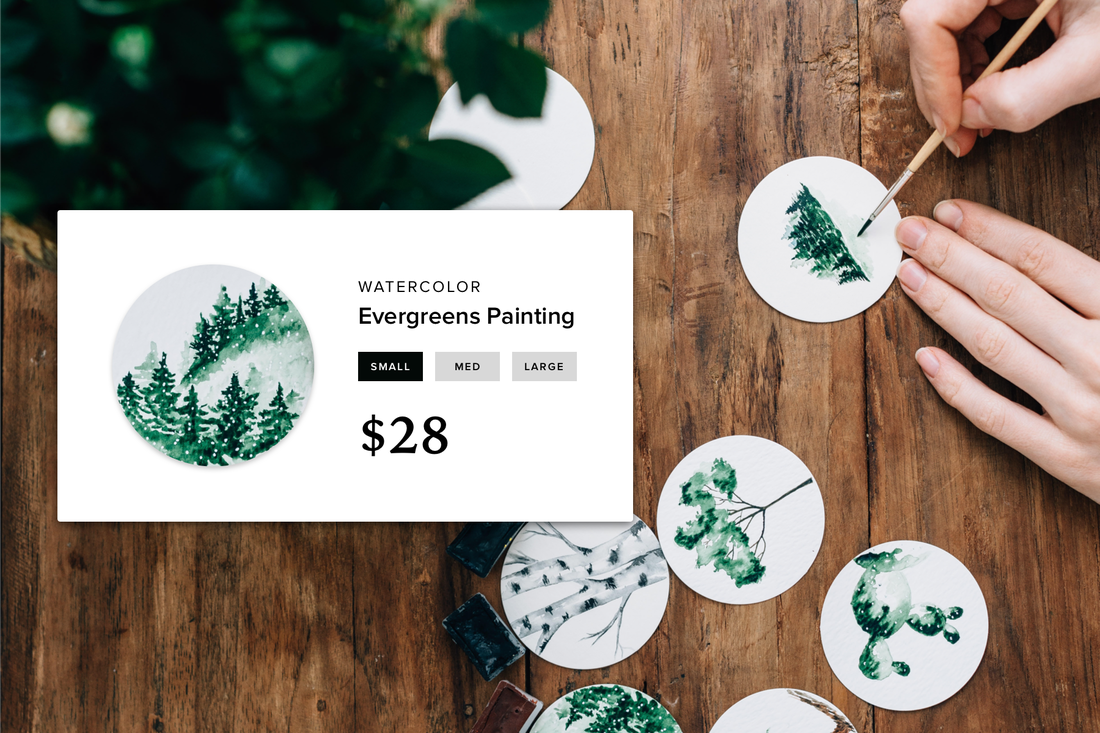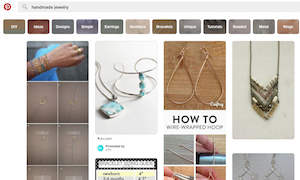Your online store is elegantly designed, stocked with appealing merchandise and operates smoothly, securely and reliably. It has all the elements of success and is open for business. Now all you need are customers! How do you let the world know you've hung out your digital eCommerce shingle?
Here are 5 free and DIY tips for drawing customers to your online store.
Build online excitement around your new business
Use Twitter, Facebook, Pinterest or other social media properties to create mystery and anticipation around your new business. A few weeks before your grand e-opening, you might post notices on social media platforms and your business's own landing page about a new face coming online soon.
If it fits with your business image and budget, consider offering discounts or gift credits to the first 100 customers, plus additional savings for referrals and credits for those referred friends. "Charter members" might receive discounts for a year.
You could offer a new clue every day as to what type of business is coming, with prizes for the first five people who guess correctly. Have fun with it.
If you've been up and running for a while, make similar moves by staging a store anniversary or other special event—perhaps an Earth Day essay contest and celebration for a "green" store, or promotion for National Small Business Day—or simply make the occasion your "official" grand opening.
Set up Pinterest, Twitter and Facebook accounts for your business
Pinterest, the popular, self-described "visual bookmarking tool," allows you to showcase your merchandise to a potentially broad and welcoming online audience, who may click through to your site and in turn generate more traffic for your store. Make sure your shop uses polished, professional-quality photographs.
Beyond publicizing your own wares, you can use Pinterest to share your business's aesthetics and interests by pinning images or quotes from other sources. (Be mindful of, and check Pinterest's statements on, copyright issues.)
Adding Pinterest's "Pin it" button to your eCommerce site makes it easy for fans to "pin" your products to their own Pinterest boards. Pinterest analytics allow you to track what items people are pinning from your store.
According to Pinterest's business blog, more than 90 percent of "Pinners" use the social media site to plan purchases and gather product information, so they're in a buying mood.
Twitter is a convenient way to promote your business and notify people of new content, products and sales on your site. An engaging tweet with a link can bring new and existing customers to your site. You can also use Twitter to respond to customers—whether they've praised, complained or inquired—and help manage your store's reputation.
A Facebook page is another way to speak directly with consumers, promote your shop and build a company image.
Create—and update—an e-tail blog
Many well established retailers use blogs on their eCommerce sites to entertain, enlighten, share interests and sensibilities, and, ultimately, sell products. You can do the same.
If you're selling products for kids, there's no shortage of blog topics to tap: back-to-school fashion or lunch ideas, tales from the carpool, rainy day plans, vacation ideas, toddler activities, play date tips, bedtime ideas or birthday party games.
The same holds for virtually any type of product. Selling men's custom shirts? You can provide tips on dressing for the occasion, date ideas, social and business etiquette, health and workout information, grooming dos and don'ts.
This is a good way to have a conversation with your customer or potential client.
Once you've written a new blog post, mention it with a link posted on Twitter. Someone who's never heard of your store may discover it through your article on finding the best fitting shoes, the right business hairstyle or your tips for children's bedtime rituals.
If you're basing your blog on material from magazines or other sources, be sure to mention and link to those publications, giving credit where it's due. Paraphrase content from others and build on it with your own ideas.
Announce your store to bloggers and relevant publications
Whether you're selling car-related gadgets, pottery, cupcakes, deluxe leather belts or doggie sweaters, there are bloggers, online communities and publications whose audiences would like to know about your online store.
You can always announce yourself on message boards, which may be particularly helpful if you're already an active participant in those communities. You may get more mileage, however, if a popular blogger mentions your business.
While there are no guarantees of coverage, sending the right blogger, reporter or editor an email with two or three photos, a link to your site and a positive, straightforward (not overly hyped) description of your store may result in an important bit of publicity. If there's a compelling story behind your business, emphasize that in your message.
If you're confident in your ability to write a strong introduction to your business, then go for it. If not, consider paying a professional to put together a good press release or letter for you.
Search Engine Watch notes in a blog post on e-tail marketing that you can send a press release for free using sites such as 24-7 pressrelease and PRLOG.
Establish yourself as an expert.
Your business blog is one place to start. Besides writing blog posts, you can draw in visitors and offer good content by making and embedding YouTube videos or podcasts relevant to your business, i.e., how to choose fashion accessories for a professional wardrobe.
You also can become known as an aficionado in your field by writing and posting articles relevant to your customers on LinkedIn. You might try this after adding your personal and company profiles on the business-oriented social networking site. In addition to writing your own opinion pieces, you can share and comment on articles by others on LinkedIn.
LinkedIn provides free marketing, branding and sales guides for small businesses.
Offer to guest blog for prominent websites relevant to your industry, including blogs run by companies that supply the products you sell. You'll be letting those brands' fans know about another place—your e-shop—where they can find their favorite products.
These are just five of numerous free and paid options for attracting customers to your online store. Search Engine Optimization, which is important in promoting any website, is another important tool to keep in mind.
Any step you take to market your business—no matter how small it may seem—could make a significant difference in raising your profile and attracting new customers.
Build online excitement around your new business
Use Twitter, Facebook, Pinterest or other social media properties to create mystery and anticipation around your new business. A few weeks before your grand e-opening, you might post notices on social media platforms and your business's own landing page about a new face coming online soon.
If it fits with your business image and budget, consider offering discounts or gift credits to the first 100 customers, plus additional savings for referrals and credits for those referred friends. "Charter members" might receive discounts for a year.
You could offer a new clue every day as to what type of business is coming, with prizes for the first five people who guess correctly. Have fun with it.
If you've been up and running for a while, make similar moves by staging a store anniversary or other special event—perhaps an Earth Day essay contest and celebration for a "green" store, or promotion for National Small Business Day—or simply make the occasion your "official" grand opening.
Set up Pinterest, Twitter and Facebook accounts for your business
Pinterest, the popular, self-described "visual bookmarking tool," allows you to showcase your merchandise to a potentially broad and welcoming online audience, who may click through to your site and in turn generate more traffic for your store. Make sure your shop uses polished, professional-quality photographs.
Beyond publicizing your own wares, you can use Pinterest to share your business's aesthetics and interests by pinning images or quotes from other sources. (Be mindful of, and check Pinterest's statements on, copyright issues.)
Adding Pinterest's "Pin it" button to your eCommerce site makes it easy for fans to "pin" your products to their own Pinterest boards. Pinterest analytics allow you to track what items people are pinning from your store.
According to Pinterest's business blog, more than 90 percent of "Pinners" use the social media site to plan purchases and gather product information, so they're in a buying mood.
Twitter is a convenient way to promote your business and notify people of new content, products and sales on your site. An engaging tweet with a link can bring new and existing customers to your site. You can also use Twitter to respond to customers—whether they've praised, complained or inquired—and help manage your store's reputation.
A Facebook page is another way to speak directly with consumers, promote your shop and build a company image.
Create—and update—an e-tail blog
Many well established retailers use blogs on their eCommerce sites to entertain, enlighten, share interests and sensibilities, and, ultimately, sell products. You can do the same.
If you're selling products for kids, there's no shortage of blog topics to tap: back-to-school fashion or lunch ideas, tales from the carpool, rainy day plans, vacation ideas, toddler activities, play date tips, bedtime ideas or birthday party games.
The same holds for virtually any type of product. Selling men's custom shirts? You can provide tips on dressing for the occasion, date ideas, social and business etiquette, health and workout information, grooming dos and don'ts.
This is a good way to have a conversation with your customer or potential client.
Once you've written a new blog post, mention it with a link posted on Twitter. Someone who's never heard of your store may discover it through your article on finding the best fitting shoes, the right business hairstyle or your tips for children's bedtime rituals.
If you're basing your blog on material from magazines or other sources, be sure to mention and link to those publications, giving credit where it's due. Paraphrase content from others and build on it with your own ideas.
Announce your store to bloggers and relevant publications
Whether you're selling car-related gadgets, pottery, cupcakes, deluxe leather belts or doggie sweaters, there are bloggers, online communities and publications whose audiences would like to know about your online store.
You can always announce yourself on message boards, which may be particularly helpful if you're already an active participant in those communities. You may get more mileage, however, if a popular blogger mentions your business.
While there are no guarantees of coverage, sending the right blogger, reporter or editor an email with two or three photos, a link to your site and a positive, straightforward (not overly hyped) description of your store may result in an important bit of publicity. If there's a compelling story behind your business, emphasize that in your message.
If you're confident in your ability to write a strong introduction to your business, then go for it. If not, consider paying a professional to put together a good press release or letter for you.
Search Engine Watch notes in a blog post on e-tail marketing that you can send a press release for free using sites such as 24-7 pressrelease and PRLOG.
Establish yourself as an expert.
Your business blog is one place to start. Besides writing blog posts, you can draw in visitors and offer good content by making and embedding YouTube videos or podcasts relevant to your business, i.e., how to choose fashion accessories for a professional wardrobe.
You also can become known as an aficionado in your field by writing and posting articles relevant to your customers on LinkedIn. You might try this after adding your personal and company profiles on the business-oriented social networking site. In addition to writing your own opinion pieces, you can share and comment on articles by others on LinkedIn.
LinkedIn provides free marketing, branding and sales guides for small businesses.
Offer to guest blog for prominent websites relevant to your industry, including blogs run by companies that supply the products you sell. You'll be letting those brands' fans know about another place—your e-shop—where they can find their favorite products.
These are just five of numerous free and paid options for attracting customers to your online store. Search Engine Optimization, which is important in promoting any website, is another important tool to keep in mind.
Any step you take to market your business—no matter how small it may seem—could make a significant difference in raising your profile and attracting new customers.
 Dinah W. Brin A freelance reporter and writer based in Philadelphia, Pa., Dinah previously worked as a staff reporter for The Associated Press and Dow Jones Newswires, among other publications.
Dinah W. Brin A freelance reporter and writer based in Philadelphia, Pa., Dinah previously worked as a staff reporter for The Associated Press and Dow Jones Newswires, among other publications.





